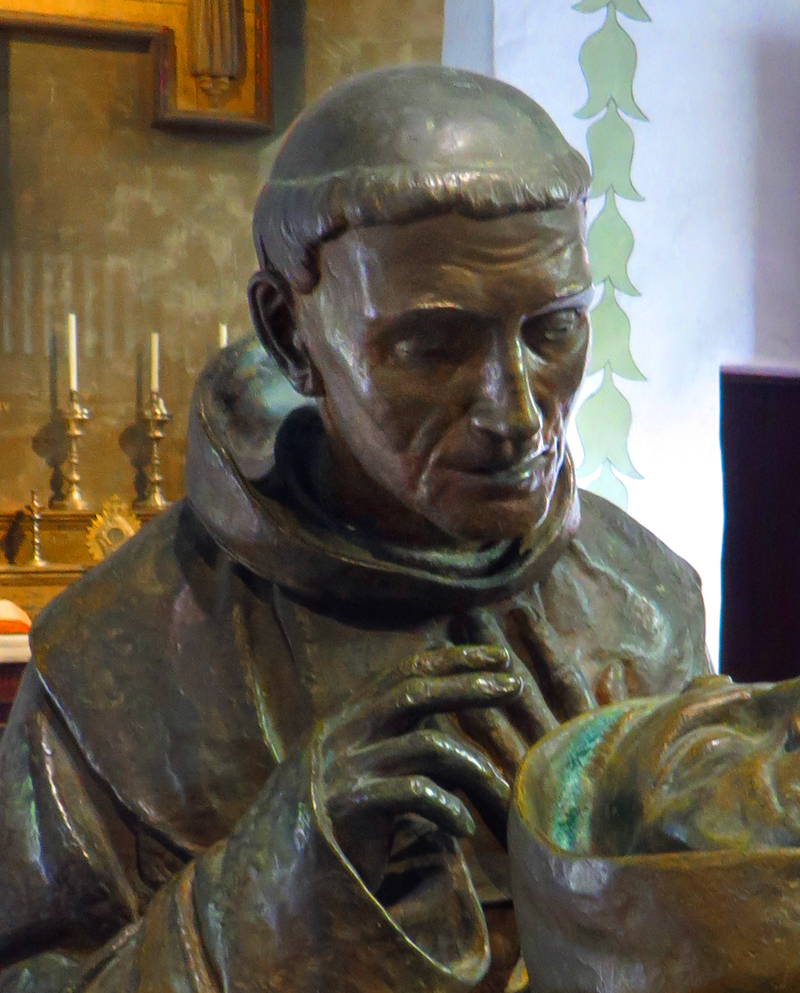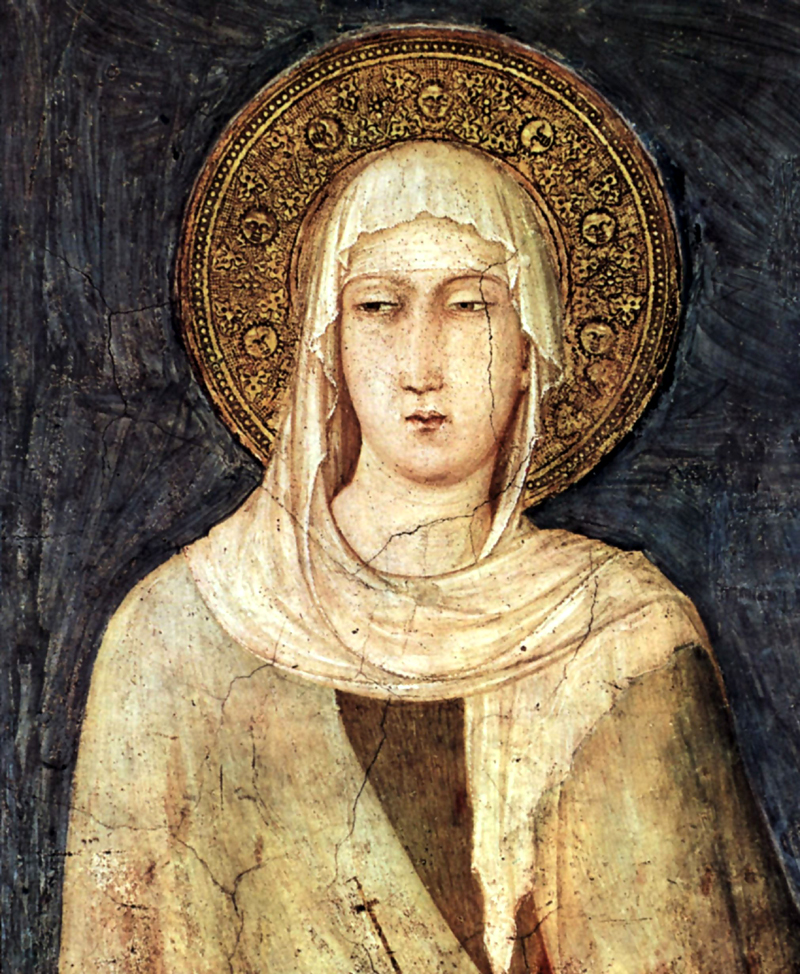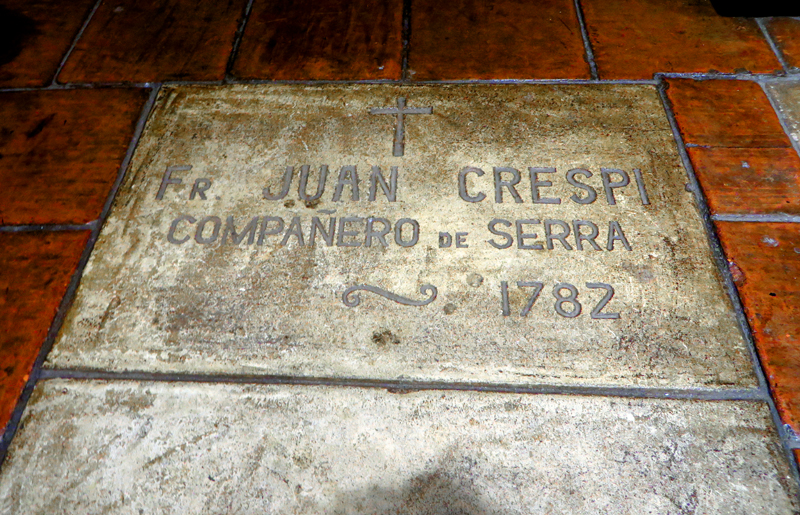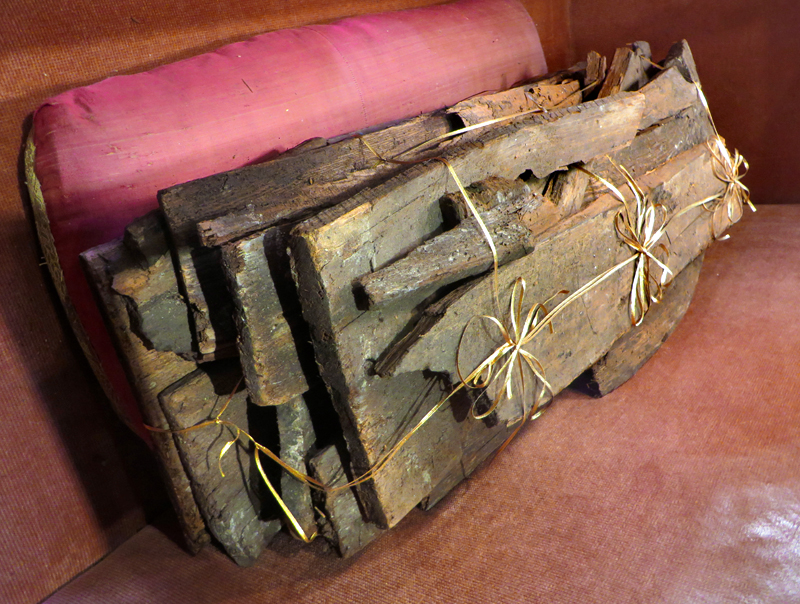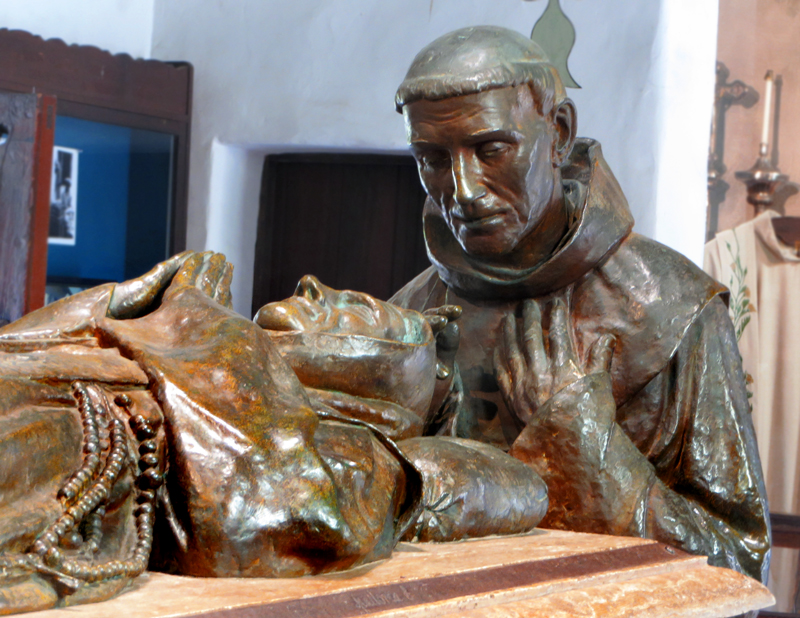|
|
SCV Pioneers
Crespi's SCV Legacy.
Spanish Priest Named a River That Came to Denote Our Valley.
By Alan Pollack, M.D.
| Heritage Junction Dispatch, July-Aug. 2013
|
As I am traveling in Spain and writing this article in a hotel room in Madrid, I thought it would be appropriate to explore the life of a Spanish priest who accompanied the first European ground expedition into Alta California in 1769. His name was Father Juan Crespí. Born in 1721 in Palma de Mallorca, Spain, Crespí became a Franciscan priest at age 17. While living in Palma, he attended philosophy and theology classes taught by Father Junipero Serra at the 14th-century monastery of the church basilica St. Francois, the most famous church in medieval Palma. At the time, the Franciscans had a major influence on the cultural life of Mallorca. Crespí and Serra would later leave an indelible mark on California history. One of Serra's favorite pupils at the monastery — and an elementary school classmate of Crespí — was Francisco Palóu. Serra and Palóu became close, and Serra at one point confided in Palóu his desire to become a missionary in New Spain, stating: "The rumor is true. I am the one who intends to make this long journey, and I have been sorrowful because I would have no companion for so long a journey; but I would not on that account turn back from my purpose. ... In my heart I felt that inclination to speak to you as I was led to believe you would be interested." Serra, Palóu and Crespí agreed to volunteer as missionaries and travel to the New World. In April 1749, Serra and Palóu left the monastery at Palma and traveled to Cadiz. Crespí followed them that September. From there they embarked on a 99-day ocean voyage that took them across the Atlantic to Vera Cruz in New Spain in December 1749. Upon arrival at Vera Cruz, and after some additional training at the College of San Fernando in Mexico City, Serra and Palóu learned of the deaths of four priests who attended the Pame Indians at the missions in the rugged mountainous area of Sierra Gorda, northeast of Mexico City. The two men volunteered as replacements for the deceased missionaries and spent the next eight years working at the mission of Santiago at Jalpan, the principal town of the Pames. Crespí was assigned to work in the town of San Francisco de Tilaco. King Charles III of Spain issued a royal decree in 1767 to expel all Jesuit priests from Spain and Spain's New World territories, along with confiscation of all of their possessions. Over a period of 70 years, the Jesuits had been building a series of missions in Baja California. As part of the effort to expel the Jesuits from Baja, Visitador-General José de Gálvez commissioned a Catalonian soldier, Gaspar de Portolá, to lead a group of 50 soldiers to pay a surprise visit to the 16 Jesuits on the Baja peninsula for the purpose of sending them into exile. It took Portolá and his troops several months to accomplish this task. Crespí, Serra and Palóu, along with 13 other Franciscan padres, arrived at Loreto in Baja California in April 1768 to replace the exiled Jesuits. Father Crespí was sent to, and placed in charge of, the Misión La Purísima Concepción de Cadegomó. Soon thereafter, the Spanish ambassador to Russia began sending alarming messages to Madrid that the Russians were planning to push southward from their occupation of the Aleutian Islands to as far as San Francisco and Monterrey, an area that had been claimed by Spain for nearly 200 years but was never occupied. José de Gálvez then persuaded Carlos Francisco de Croix, the viceroy of New Spain, to authorize an expedition into Alta California. The original royal order was for an expedition only by sea to Monterey. However, Galvez, citing the difficulties of a sea expedition and his desire to explore the mysterious province of Alta California while establishing colonies at San Diego and Monterey, chose to send both a sea and land expedition. Serra was unanimously selected by the College of San Fernando de Mexico to lead this endeavor as president of the California mission system with Palóu acting as his deputy. Portolá, already stationed in Baja California, was chosen to command the troops who would accompany the Padres on the land expedition. In 1769, the first of two land expeditions started off from Baja California under the command of Captain Rivera y Moncada. Receiving word that the troops had marched as far north as Velicata in Baja California, Serra asked Crespí to leave his mission and meet Rivera y Moncada at Velicata. Crespí arrived there in March 1769. That same month, a second land expedition, led by Portolá, started off from Loreto and headed toward Velicata. After recuperating for a few weeks in Loreto from a leg infection, Serra rode on mule back to catch up with Portolá. In May 1769 they arrived at Velicata, where Serra established his first mission. Meanwhile, the expedition led by Rivera y Moncada, with Crespí acting as one of two diarists, had arrived in San Diego, where they met the two ships of the sea expedition. Here they waited for the arrival of the party led by Portolá and Serra in late June 1769. After some further planning, the land expedition left San Diego on July 14, 1769, with Portolá in command, accompanied by Capt. Rivera y Moncada, Crespí as a diarist, Miguel Costansó (who, like Crespí, kept a daily journal), Lt. Pedro Fages, and various other soldiers, muleteers, and Christianized Baja Indians. Serra was left behind in San Diego to establish his second mission (his first in Alta California), and to accompany the sea expedition to Monterey. The expedition reached what is now Los Angeles on Aug. 2. Here they first saw a river which would inspire the name of this modern day metropolis.
In his diary, Crespí states: "This river can be seen flowing down, its bed not deeply sunken below the surrounding ground, through a very green, lush, wide-spreading valley — an extent, north and south, of some leagues of level soil ... so that it can truly be said to a most handsome garden . . . and in time to come there may be a very large and rich mission of Our Lady of the Angels of the Porciúncula, this being the day upon which we came to it, when this well-known Indulgence is gained in our Seraphic order; and so we have proclaimed it El Río y Valle de Nuestra Señora de los Angeles de la Porciúncula." The Portolá expedition traversed across the San Gabriel Mountains and arrived in the Santa Clarita Valley on Aug. 8. It turns out that most of the names Crespí bestowed on various landmarks throughout the expedition did not survive. One of the few that did survive was the Santa Clara River. Crespí first applied the name "Santa Clara" to a band of Indians encountered along the river on Aug. 12, on the eve of the feast day of the great Saint Clare of Assisi (1194–1253), founder of an order for women. The name was later extended to include the entire Santa Clara River. (Note: Costanso reports the date as Aug. 10 and says the name was applied to the "canyon" of Santa Clara, which we would consider the Santa Clara River Valley. Read it here.) The main objective of the Portolá expedition was to find the harbor of Monterey. They failed in this objective, although they actually did see Monterey twice, but did not recognize what they were seeing. They did manage to discover San Francisco bay, after which they returned to San Diego. In March 1770, Portolá and Crespí, along with a smaller group of 30 men, set out on a second land expedition to find Monterey. They followed much the same route as the first expedition. This time they recognized the bay of Monterey successfully. A week later, the ship San Antonio arrived with Serra, who established the Presidio and Mission of Monterey (his third mission) on June 3, 1770, with Crespí participating in the colorful ceremony. The next month, Portolá, having accomplished his mission, left Alta California in the charge of his lieutenant, Fages, and headed back to what is now Mexico. He never again set foot in California.
In 1771, Serra decided to move the Monterey mission to the more fertile Carmel Valley. Here he set up Crespí as the first resident priest of the mission, and established his official headquarters for the remainder of his life. Crespí left his friend Serra — and Carmel — only to participate in three further expeditions, which included a March 1772 excursion led by Fages to explore the eastern shore of San Francisco Bay; an April 1772 pack train to bring badly needed supplies to San Diego; and a sea expedition to Alaska in 1774. The Alaska expedition turned out to be his last. Crespí spent his last seven years at the mission in Carmel. Crespí, Serra and Palóu had one final happy reunion in San Francisco in 1781. Shortly after he returned to Carmel with Serra, Crespí developed a respiratory condition that eventually led to his death on New Year's Day, 1782. Fathers Crespí and Serra are buried at Carmel. Their good friend Palóu ended his days in Mexico City where he was laid to rest. Source material: "Juan Crespí: The Man Who Named Los Angeles" by Raymund F. Wood in Southern Southern California Quarterly, Vol. 53, No. 3, Mission San Gabriel Arcángel 1771-1971 (Sept. 1971), pp. 199-234.
Alan Pollack, M.D., is president of the Santa Clarita Valley Historical Society. |
Story: Rio Santa Clara in Costansó's Diary Perkins Manuscript: Colonization
Junípero Serra (1)
Junípero Serra (2)
Juan Crespí Story
Graves of Serra, Crespí, Lasuen
Serra's Coffin
Serra Cenotaph
Pedro Fages
Fages Marker
Francisco Garcés
Early Afro-Mexican Settlers (Video 2015)
|
The site owner makes no assertions as to ownership of any original copyrights to digitized images. However, these images are intended for Personal or Research use only. Any other kind of use, including but not limited to commercial or scholarly publication in any medium or format, public exhibition, or use online or in a web site, may be subject to additional restrictions including but not limited to the copyrights held by parties other than the site owner. USERS ARE SOLELY RESPONSIBLE for determining the existence of such rights and for obtaining any permissions and/or paying associated fees necessary for the proposed use.
